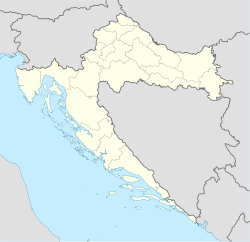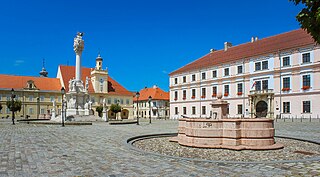
Osijek is the fourth-largest city in Croatia, with a population of 96,848 in 2021. It is the largest city and the economic and cultural centre of the eastern Croatian region of Slavonia, as well as the administrative centre of Osijek-Baranja County. Osijek is on the right bank of the Drava River, 25 km (16 mi) upstream of its confluence with the Danube, at an elevation of 94 m (308 ft).

Našice is a town in eastern Croatia, located on the northern slopes of the Krndija mountain in eastern Slavonia, 51 km southwest of regional hub Osijek. Administratively it belongs to Osijek-Baranja County.

Donji Miholjac, is a town in the Slavonia region of Croatia, on the river Drava and the border with Hungary.

Bilje is a municipality in the Baranja region of Osijek-Baranja County, in north-eastern Croatia. It is 5 km northeast of Osijek, on the edge of the Kopački Rit nature park. Prince Eugene of Savoy (1663-1736) constructed a hunting lodge here, Bilje Castle, which later became property of the Teschen branch of the Habsburg family.
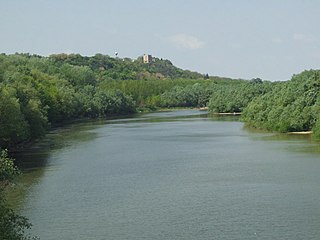
Erdut is a village and a municipality in eastern Croatia some 37 km east of the major city of Osijek. Lying on the border with neighbouring Serbia, it was the site of the signing of the 1995 Erdut Agreement, which initiated the UNTAES transitional administration over the Eastern Slavonia, Baranja and Western Syrmia.

Kneževi Vinogradi is a village and municipality in Croatia. It is situated in the Osijek-Baranja County, on the southern slopes of Bansko Brdo, 11 km southeast of Beli Manastir. It lies at an altitude of 103 m. Chief occupations of villagers include farming, viticulture, livestock breeding and dairy industry. At the time of 2011 census, Kneževi Vinogradi was the only municipality in Croatia with a relative majority of Hungarians of Croatia.
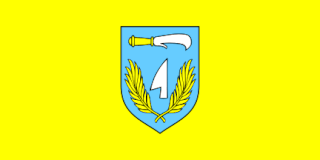
Petlovac is a village and municipality in the western part of Baranja, which comprise the northern part of Osijek-Baranja County in Croatia. Petlovac is underdeveloped municipality which is statistically classified as the First Category Area of Special State Concern by the Government of Croatia.

Jagodnjak is a village and a municipality in the Osijek-Baranja County, Croatia. Landscape of the Jagodnjak Municipality is marked by the Drava river with surrounding wetland forest and by Pannonian Basin plains with agricultural fields of wheat, common sunflower, maize and sugar beet.

Šodolovci is a village and a municipality in Osijek-Baranja County in eastern Croatia. In the seven villages of the Šodolovci Municipality, there were 1,653 inhabitants at the time of the 2011 Census.

Čeminac is a village and municipality in Osijek-Baranja County, Croatia. As of 2021, there were 2,856 inhabitants in the municipality. Čeminac is an underdeveloped municipality which is statistically classified as the First Category Area of Special State Concern by the Government of Croatia.

Ernestinovo is a municipality in Osijek-Baranja County, Croatia.

Koška is a municipality in Osijek-Baranja County, Croatia. There are 3,980 inhabitants, 89.5% of them Croats, 6.78% Serbs and 1.38% Slovaks.
Trnava is a village and a municipality in Osijek-Baranja County, Croatia.
Levanjska Varoš is a municipality in Osijek-Baranja County, Croatia.
Magadenovac is a village and a municipality in Osijek-Baranja County, Croatia.
Podgorač is a municipality in Osijek-Baranja County, Croatia.

Podravska Moslavina is a village and a municipality in Osijek-Baranja County, Croatia.
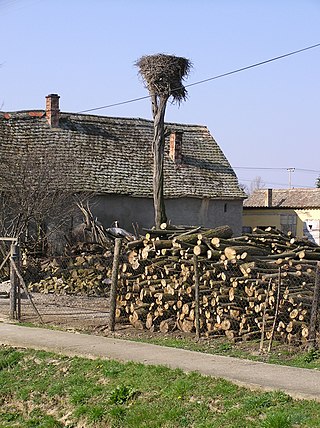
Popovac is a village and municipality in Osijek-Baranja County, Croatia. There are 2,084 inhabitants in the municipality. Popovac is an underdeveloped municipality, which is statistically classified as the First Category Area of Special State Concern by the Government of Croatia.
Viljevo is a village and a municipality in Osijek-Baranja County, Croatia.
Vladislavci is a village and a municipality in Osijek-Baranja County, Croatia.




